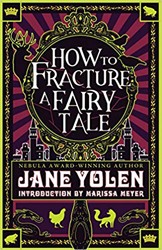David Stromberg, together with five scholarly translators, presents the first English renditions of eighteen Yiddish children’s stories written in the first third of the twentieth century. The tales draw from the published works of six Eastern European-born authors, many who made their way to New York: Leon Elbe (pen name of Leyb Bassein), Sonia Kantor, Jacob Kreplak, Moyshe Nadir, Jacob Reisfeder, and Rachel Shabad (better known as Regina Weinreich).
The book’s introduction presents Yiddish as a “culture of resilience” and morals, which leads Stromberg to divide the book into four chapters: Bravery, Rebellion, Justice, and Wonder. Many of the stories use anthropomorphism to communicate a lesson. A boy who has been unkind to animals dreams that he has been transformed into a bird and is horrified to find his friend caught in the bird trap he built earlier that day. Two colorful leaves bravely try to swim to Green Land, rather than wait to be blown away by the autumn winds and abandoned on the ground. An ancient mushroom king sadly watches as the forest keeper’s heedless children leave a promising new son of his to die.
Sometimes it is elusive as to why stories belong to certain chapters. Where is the Bravery in the title story, set in a land without salt, where parents smack their children so their tears can flavor the soup? Is it Justice when two boys who have been pushing each other run away after the sexton’s wife appears and threatens to tell their fathers?
It’s a tricky task to reach children with tales from the past — tone, language, imagery, and humor don’t always make the leap. Many stories in the collection also pass along stereotypes common eighty or ninety years ago, but now sorely out of date. A boy who convinces a king to change his ways has his heart in the right place, but he is attractive and blond, which is why the king first takes him up on his lap. One narrator condescendingly addresses the reader, “Sit yourselves down on this bench, like good children, and I’ll tell you a story.” Some tales are overtly didactic. Some are lacking in plot.
The stories that best translate to today are those in which empathy and goodness reign. The Diamond Prince, ashamed of the sparkly hardness of his face, insists to the king that he will not soften his skin by bathing in the tears of needy children, as the red gnome has said he must. Gur Aryeh, a poor rabbi in Prague who is favored by the king, is goaded by jealous advisers into promising that he will host a dinner. No one knows how he will be able to accomplish this, but the dinner turns out to be a magical event, with golden tables and a comeuppance for the courtier who tries to pocket a golden saltshaker.
In the Land of Happy Tears offers a mixed bag of fantasy and realism, humor and sadness. Many of these unusual stories may not appeal to today’s young readers, but they will surely be a rich source of analysis and discussion for scholars and historians.
Sharon Elswit, author of The Jewish Story Finder and a school librarian for forty years in NYC, now resides in San Francisco, where she shares tales aloud in a local JCC preschool and volunteers with 826 Valencia to help students write their own stories and poems.





